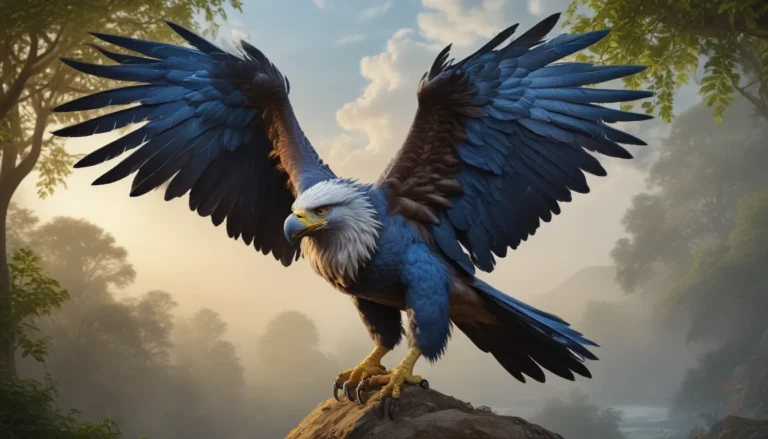The pictures we use in our articles might not show exactly what the words say. We choose these pictures to make you interested in reading more. The pictures work together with the words but don’t take their place. The words still tell you the important facts.
Have you ever marveled at the magnificence of the white rhinoceros, also known as the square-lipped rhinoceros? These iconic creatures, found in the vast plains of Africa, have captivated the hearts of nature enthusiasts and wildlife lovers worldwide. Beyond their imposing size and striking appearance lies a world of unique characteristics and behaviors that make white rhinoceroses truly extraordinary. In this article, we will delve into 13 fascinating facts about white rhinoceroses, shedding light on their conservation story, distinctive features, and social dynamics. Join us on this journey as we explore the intriguing world of these majestic animals and uncover the wonders of Mother Nature's creation.
Key Takeaways:
- White rhinoceroses are the second largest land mammals on Earth, boasting a unique hump on their necks and a symbiotic relationship with oxpeckers. They communicate through dung piles and play a vital role in ecosystem maintenance.
- Despite their poor eyesight, white rhinos have excellent hearing and a keen sense of smell. They live in small social groups called crashes, have no natural predators, and can live up to 40-50 years with proper protection and conservation efforts.
The Second Largest Land Mammal on Earth
The white rhinoceros, also known as the square-lipped rhinoceros, is a true giant of the African savanna. These magnificent creatures can reach lengths of up to 4.3 meters and tip the scales at a whopping 2,500 kilograms.
The Misleading Name
Contrary to what the name suggests, the white rhinoceros is not actually white. The name "white" is derived from the Dutch word "wijde," meaning wide, referring to the rhino's wide mouth. In reality, their skin color varies from shades of gray to brown.
A Unique Adaptation - The Neck Hump
White rhinos sport a distinctive hump on their necks, composed of muscle that supports their massive heads. This adaptation allows them to graze on grass for extended periods, showcasing their specialized feeding habits.
Symbiosis with Oxpeckers
In a mutually beneficial relationship, white rhinos host oxpeckers, also known as tickbirds, on their backs. These birds feed on ticks and parasites on the rhino's skin, while also acting as an early warning system by alerting the rhinos to potential dangers.
Communication Through Dung Piles
White rhinos utilize communal dung piles within their territories as vital communication points. By sniffing and leaving their dung, rhinos can discern the presence and reproductive status of other individuals, showcasing their unique method of communication.
Diminished Eyesight, Heightened Senses
White rhinos may have poor eyesight, but their exceptional hearing and sense of smell more than compensate. These senses play a critical role in helping them detect potential threats in their environment, ensuring their survival in the wild.
Herbivores of the African Plains
As herbivores, white rhinos have a specialized diet primarily consisting of grass. Their wide, square lips are perfectly adapted for grazing on low-growing vegetation, showcasing their unique feeding habits.
Social Dynamics in Crashes
White rhinos live in small social groups called crashes, typically led by a dominant male accompanied by several females and their offspring. The dominant male plays a crucial role in defending the group's territory from rival males, highlighting the intricate social dynamics within rhino populations.
Lengthy Gestation Period
White rhinos have one of the longest gestation periods among mammals, lasting around 16 months. Females give birth to a single calf, which remains under their care for up to two years before attaining independence, showcasing the nurturing nature of these magnificent creatures.
Threats and Longevity
Despite having no natural predators in the wild due to their size and thick skin, white rhinos face threats from poaching, habitat loss, and human encroachment. With proper protection and conservation efforts, these resilient animals can live up to 40-50 years, contributing to ecosystem balance and diversity.
Sounds of the Savanna
White rhinos communicate through a variety of vocalizations, ranging from snorts and grunts to bellows and growls. These vocal cues serve different purposes, from warning intruders to signaling dominance within their social groups.
Guardians of Ecosystem Balance
As grazers, white rhinos play a vital role in maintaining ecosystem balance by controlling the growth of grass. This helps regulate plant species diversity, providing food and habitat for a variety of other animals in the African savanna.
Conclusion
In conclusion, the white rhinoceros is not just a magnificent creature but a crucial component of the African savanna's delicate ecosystem. From their unique adaptations to their social dynamics and conservation challenges, white rhinos offer a wealth of fascinating insights for nature enthusiasts. By raising awareness, supporting conservation efforts, and advocating for sustainable practices, we can ensure the preservation of these majestic animals for generations to come.
FAQs:
Q: How many white rhinos are left in the wild?
A: As of the latest estimates, there are approximately 18,000 white rhinos in the wild, predominantly concentrated in Southern Africa.
Q: How did the white rhino get its name?
A: The name "white rhino" originated from a misinterpretation of the Afrikaans word "wyd," meaning wide, which referred to the rhino's wide mouth. This was mistakenly translated to "white" by English-speaking settlers.
Q: What is the primary threat to white rhinoceros populations?
A: The primary threat to white rhinos is poaching for their horns, which are highly coveted in illegal wildlife trade markets. Habitat loss and human-wildlife conflict also contribute to the decline in their populations.
Q: Can white rhinos swim?
A: Yes, white rhinos are capable swimmers and often utilize water bodies to cool off and rid themselves of parasites.
Q: Are white rhinos aggressive?
A: While not naturally aggressive, white rhinos can display territorial behavior if threatened or provoked, especially during mating season or when safeguarding their young.
Q: How long do white rhinos live?
A: In the wild, white rhinos have an average lifespan of 40 to 50 years. However, in protected environments like sanctuaries or zoos, they can live even longer, underscoring the importance of conservation efforts.
Explore the Wildlife World
After uncovering the fascinating world of white rhinoceroses, why not delve into the realms of other remarkable creatures? Discover the plight of pangolins, delve into astonishing facts about endangered species, or dive into the enigmatic world of killer whales. Each article offers a unique glimpse into the diversity of wildlife on our planet and the challenges they face. Which amazing animal will you explore next? Join us on a journey of discovery and learning as we celebrate the wonders of nature's creations.
Your Contribution Matters
Our dedication to providing engaging and reliable content hinges on the contributions of real users like you. Each fact on our site is submitted by individuals, enriching our platform with diverse insights and information. With meticulous editorial review, we ensure the accuracy and credibility of the facts we share, guaranteeing a trustworthy and enlightening experience for all. Trust in our commitment to quality and authenticity as you embark on a journey of exploration and education with us.






